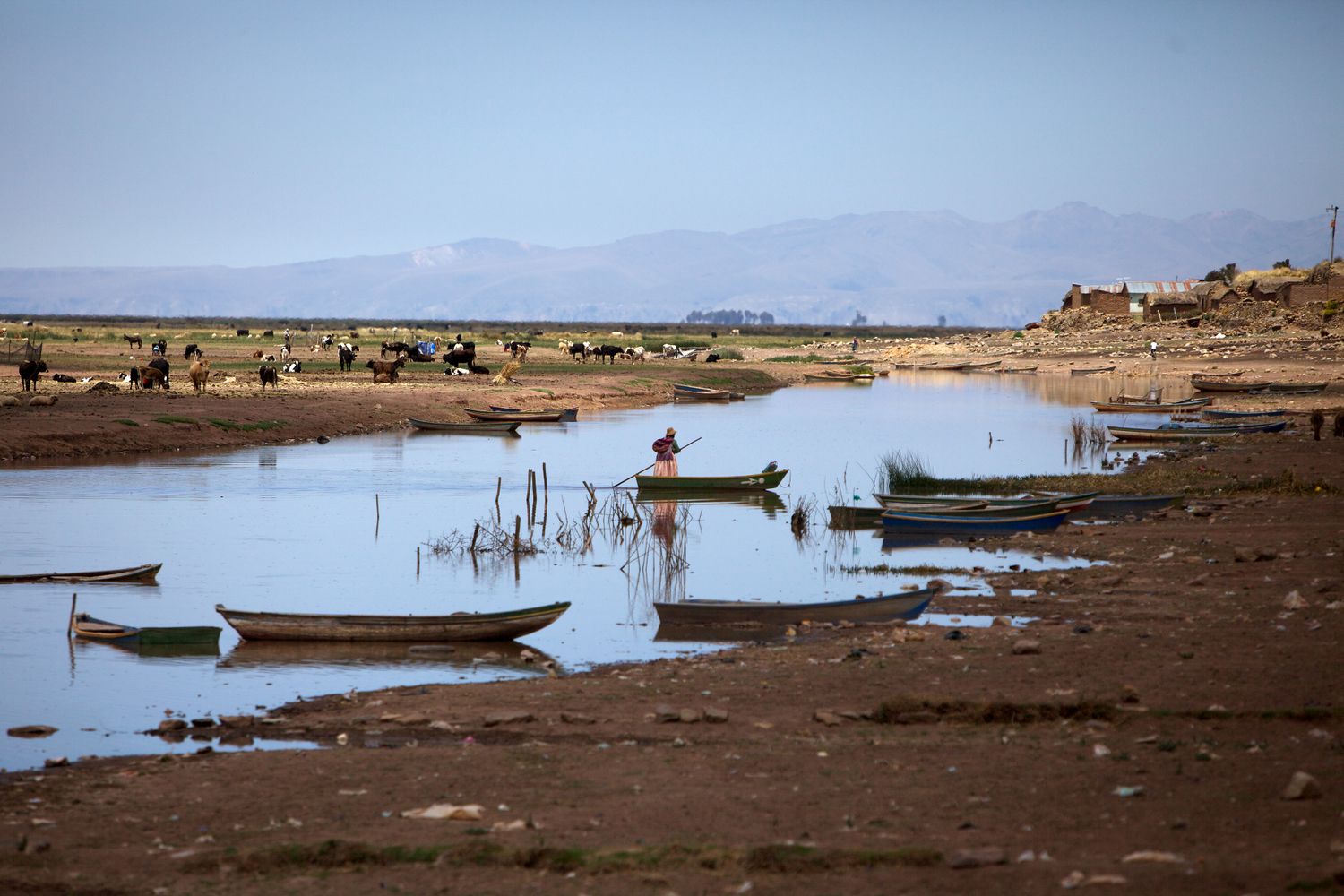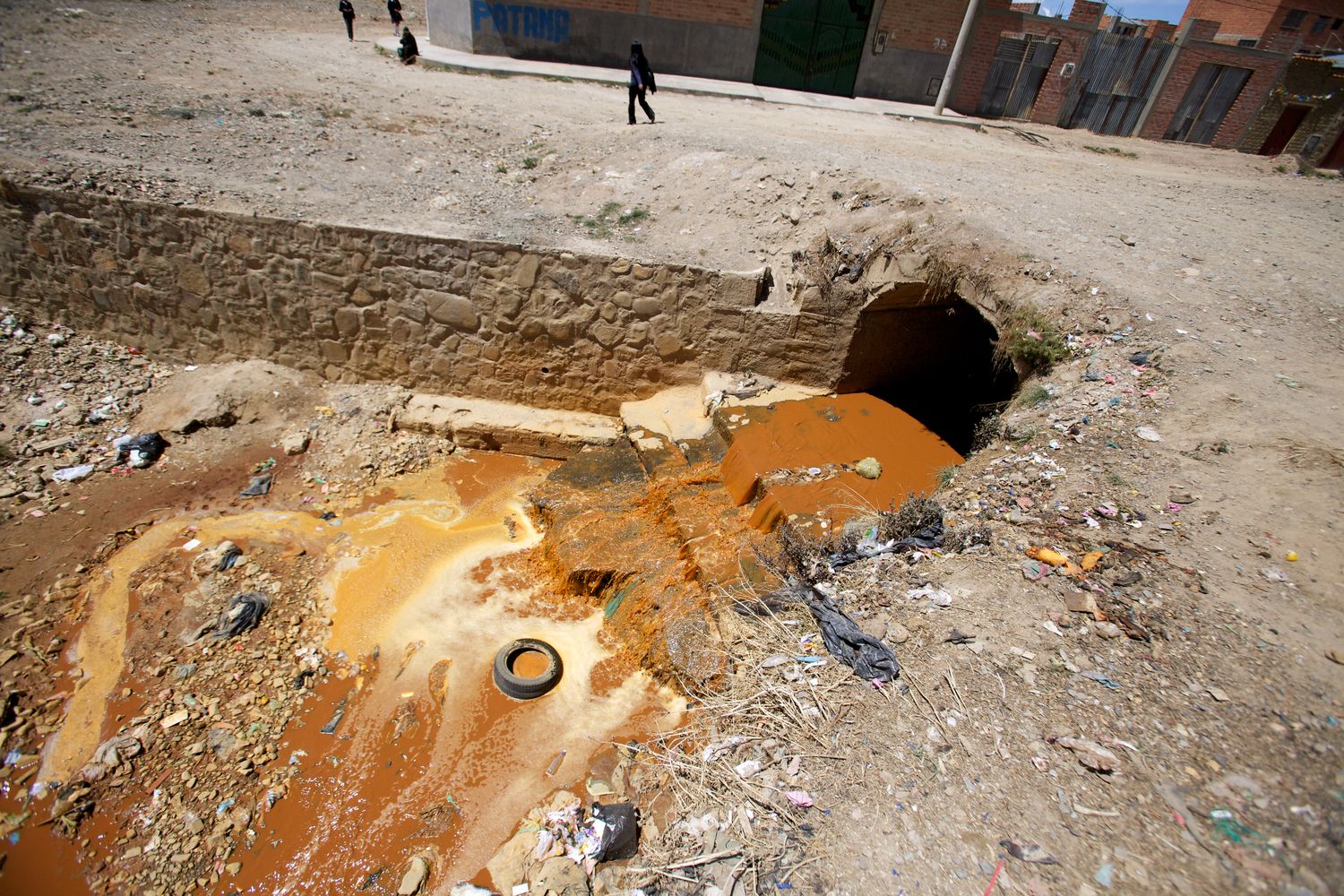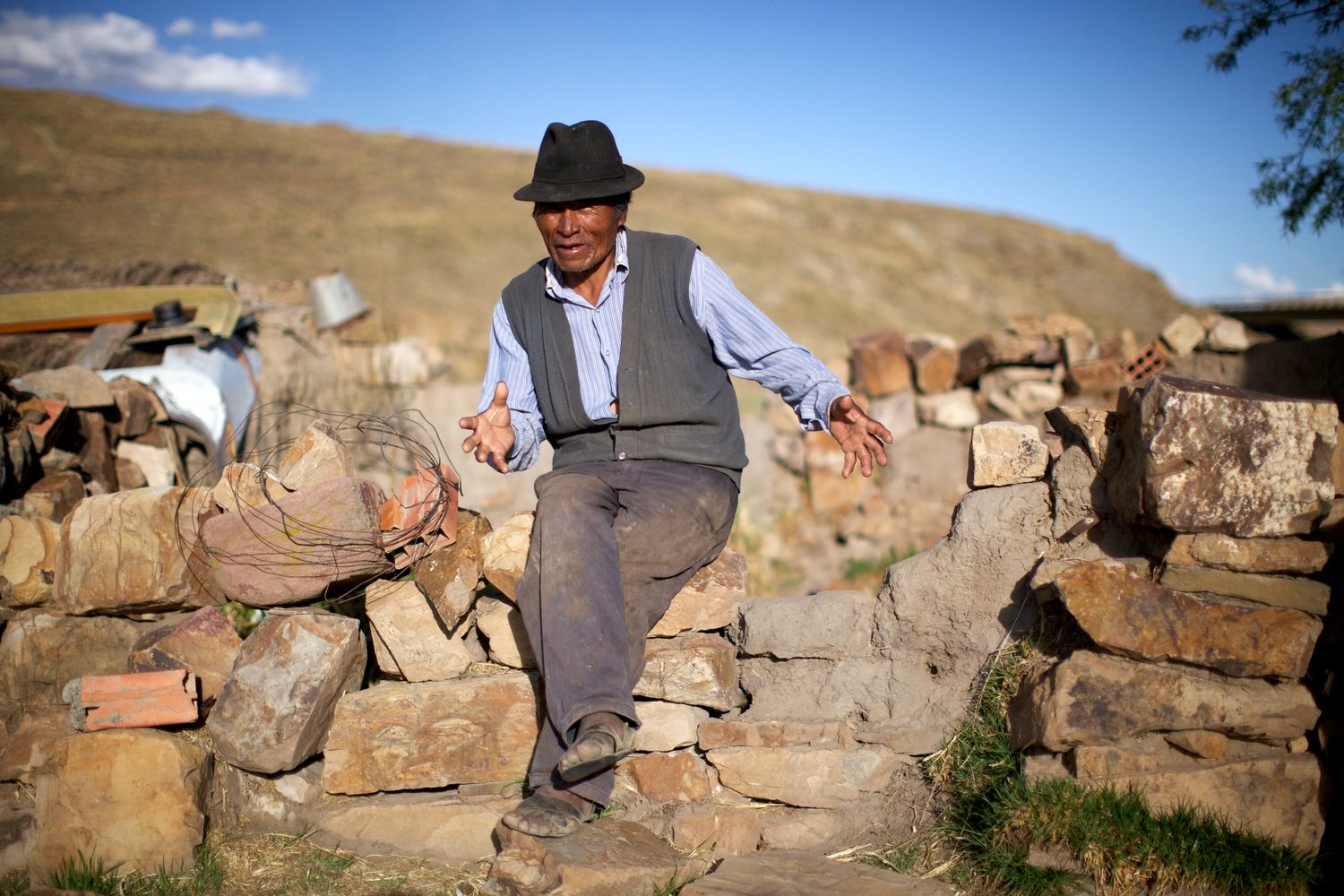In 2006, people from the municipality of Laja blocked a key highway leading toward Bolivia’s administrative capital, La Paz. They were protesting pollution of the Pallina River, which begins in Andean glaciers and passes through the metropolis of El Alto before traveling about 40 miles across Bolivia’s high plains to Lake Titicaca. Along that route it passes through Laja.
Pedro Huanca was mayor of Laja during the 2006 roadblock. The Pallina River had once been a source of clean water for the people who lived on its banks. Their livestock drank it and they used it to wash tunta, a dried potato that they sold for relatively high prices.
Huanca remembers that clean river, but by the time he became mayor it was gone. El Alto began rapid growth and industrialization in the 1980s, and waste transformed the Pallina as fish and frogs disappeared from its waters. The roadblock raised awareness of the river in Bolivia and attracted valuable international funding, but six years later the Pallina is still a foamy, pea-green soup with a strange smell.
In fact, 2006 wasn’t the first time the government had something to say about water pollution in the area. In 2004, the government of then-President Carlos Mesa passed a law declaring four rivers, including the Pallina, an environmental disaster zone.
A recently published thesis sitting in a university library in La Paz suggests the Pallina River is still an environmental disaster. Evelin Susana Humerez Espinoza studied eco-toxicity in the river. Among her many analyses were two simple experiments. She nourished onions with water from the Pallina, and they grew brown and shriveled. She put freshwater fish in the Pallina’s water, and they died within minutes. According to Humerez Espinoza’s research, the Pallina’s waters “can’t be used for irrigation, nourishing animals, and much less human consumption.”
Humerez Espinoza also found that not only El Alto, but also the upstream city of Viacha and Laja itself fail to adequately treat the wastewater they produce. El Alto is simply the biggest threat because of its industries and population of more than one million people.
The loss of the river to wash tunta and water cows are a major blow to the local economy, Huanca says, as wells must be dug so animals can have clean water, and the loss of tunta sales cuts incomes for people living in one of South America’s poorest countries.
Carlos Mesa is no longer president of Bolivia and Pedro Huanca is no longer mayor of Laja, but the Pallina’s problems persist. The 2004 law prioritizing its cleanup is one piece of paper among many. Huanca later tried to sue El Alto for polluting the Pallina, but the lawsuit went nowhere. Today several non-governmental organizations have projects underway in El Alto and Lake Titicaca, such as a group whose work includes education to decrease industrial contamination, but the scale of the problem is large and downstream communities continue to suffer.
In an office in Pucarani, a municipality neighboring Laja, Rocio Butron talks about the challenges communities face when it comes to fighting pollution. She says local governments often lack the trained staff to take on large environmental projects, and key issues such as healthcare and education tend to take precedence over sanitation in the municipal budget.
“We see that as municipal governments we are in a weak position to take on these (environmental) challenges,” Butron said. “There should be a bigger push from the central government and the departmental government to tackle these issue and get the municipalities involved to contribute.”
Butron hopes that leaders from all the affected areas stretching from El Alto down to Lake Titicaca will meet and hammer out an overarching plan. She says that would give her more confidence than laws or roadblocks, which draw attention in the moment, but don’t create workable solutions. After all, she says, downstream communities are powerless to fight the tide of contamination alone, making cooperation their best hope.







